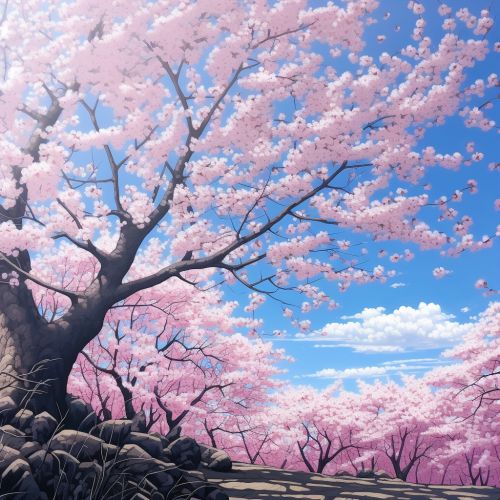Mono no aware
Concept and Origin
"Mono no aware" (物の哀れ) is a Japanese term that translates directly to "the pathos of things". It is a concept that encapsulates the transient nature of life and the gentle sadness that comes with it. The term was coined in the 18th century by Japanese scholar and literary critic Norinaga, and it has since become a central idea in Japanese aesthetics and philosophy.


The term "mono no aware" is derived from the word "mono" (物), which means "things", and "aware" (哀れ), which was originally used to describe feelings such as pity or sorrow. However, in the context of "mono no aware", "aware" takes on a broader meaning, encompassing a range of emotions including empathy, sadness, and a deep appreciation for the fleeting beauty of the natural world.
Understanding Mono no Aware
"Mono no aware" is often described as the "beauty of transience" or the "aesthetics of impermanence". It is a concept that acknowledges the impermanence of all things and finds beauty and a sense of melancholy in their passing. This idea is deeply rooted in the Buddhist belief in the impermanence of the physical world.


In "mono no aware", there is a recognition of the fleeting nature of beauty and a gentle sadness at its passing. However, this sadness is not a negative emotion. Instead, it is a poignant reminder of the ephemeral nature of life, which in turn enhances the appreciation of beauty. In other words, "mono no aware" is not about lamenting the transience of things, but rather about appreciating their momentary existence.
Mono no Aware in Literature and Art
"Mono no aware" has had a profound influence on Japanese literature and art. It is a recurring theme in many classic Japanese works, including the 11th-century novel Genji Monogatari, often considered the world's first novel. The fleeting beauty of the world is a central theme in the novel, with many scenes evoking a sense of "mono no aware".


In addition to literature, "mono no aware" is also a key concept in traditional Japanese arts such as tea ceremony, flower arranging (Ikebana), and even in the appreciation of the changing seasons. The cherry blossom (sakura), for example, is seen as a symbol of "mono no aware" due to its fleeting beauty.
Mono no Aware in Modern Times
In modern times, "mono no aware" continues to permeate Japanese culture. It can be seen in the popularity of seasonal events such as cherry blossom viewing parties (hanami) and moon viewing parties (tsukimi). These events celebrate the transient beauty of nature and are a reflection of the "mono no aware" mindset.


"Mono no aware" is also evident in contemporary Japanese literature, film, and even in pop culture. For instance, the works of authors like Haruki Murakami often explore themes of loneliness and ephemeral beauty, echoing the sentiments of "mono no aware". Similarly, many Japanese films and anime feature scenes that evoke a sense of transience and melancholy.
Conclusion
"Mono no aware" is a complex and nuanced concept that is deeply ingrained in Japanese culture. It is a worldview that embraces the impermanence of all things and finds beauty in their transient existence. Whether it is in the fleeting beauty of cherry blossoms or the poignant themes in literature and film, "mono no aware" continues to resonate with people, reminding them of the fleeting nature of life and the beauty that lies therein.


